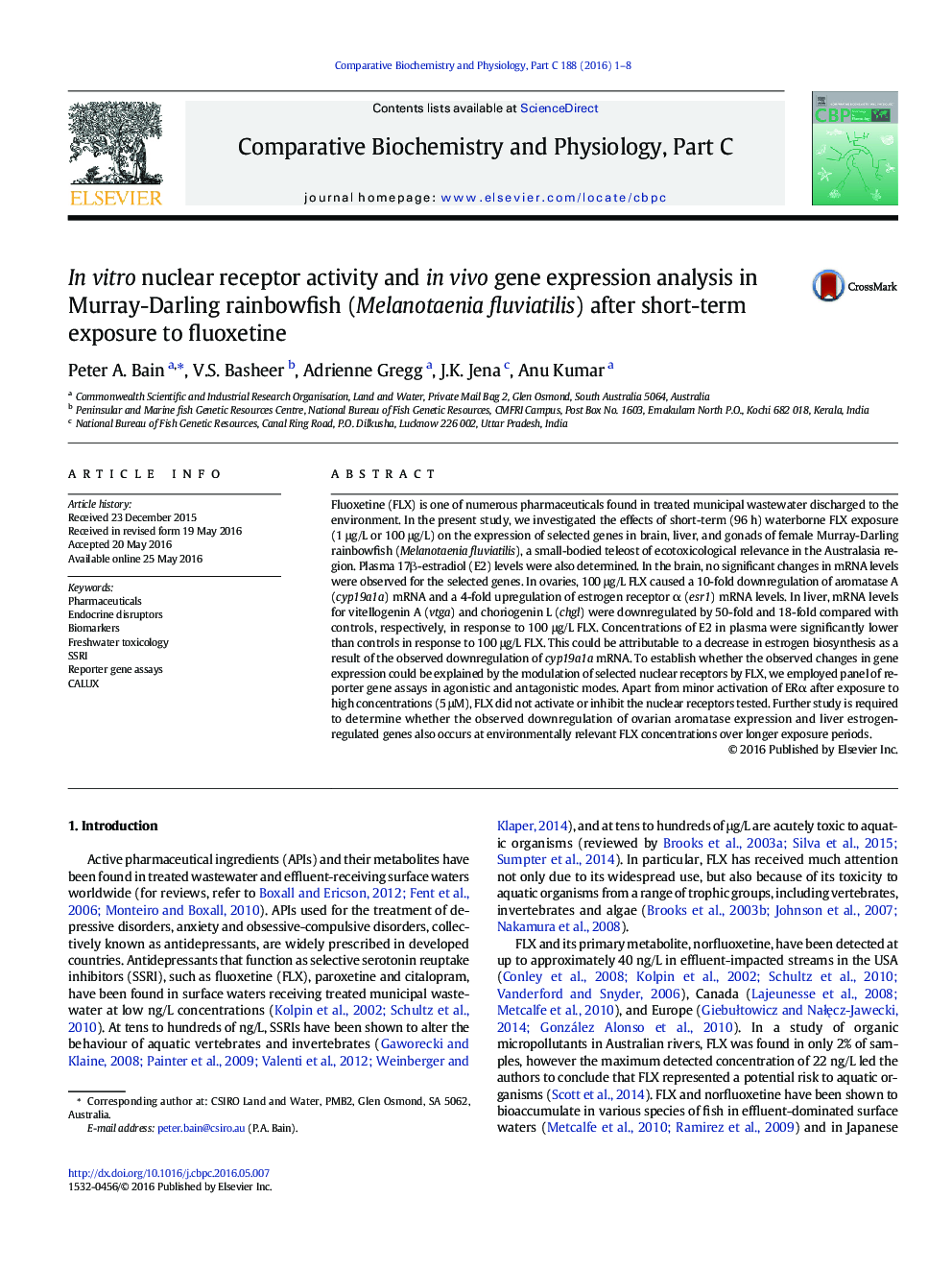| Article ID | Journal | Published Year | Pages | File Type |
|---|---|---|---|---|
| 1977101 | Comparative Biochemistry and Physiology Part C: Toxicology & Pharmacology | 2016 | 8 Pages |
Fluoxetine (FLX) is one of numerous pharmaceuticals found in treated municipal wastewater discharged to the environment. In the present study, we investigated the effects of short-term (96 h) waterborne FLX exposure (1 μg/L or 100 μg/L) on the expression of selected genes in brain, liver, and gonads of female Murray-Darling rainbowfish (Melanotaenia fluviatilis), a small-bodied teleost of ecotoxicological relevance in the Australasia region. Plasma 17β-estradiol (E2) levels were also determined. In the brain, no significant changes in mRNA levels were observed for the selected genes. In ovaries, 100 μg/L FLX caused a 10-fold downregulation of aromatase A (cyp19a1a) mRNA and a 4-fold upregulation of estrogen receptor α (esr1) mRNA levels. In liver, mRNA levels for vitellogenin A (vtga) and choriogenin L (chgl) were downregulated by 50-fold and 18-fold compared with controls, respectively, in response to 100 μg/L FLX. Concentrations of E2 in plasma were significantly lower than controls in response to 100 μg/L FLX. This could be attributable to a decrease in estrogen biosynthesis as a result of the observed downregulation of cyp19a1a mRNA. To establish whether the observed changes in gene expression could be explained by the modulation of selected nuclear receptors by FLX, we employed panel of reporter gene assays in agonistic and antagonistic modes. Apart from minor activation of ERα after exposure to high concentrations (5 μM), FLX did not activate or inhibit the nuclear receptors tested. Further study is required to determine whether the observed downregulation of ovarian aromatase expression and liver estrogen-regulated genes also occurs at environmentally relevant FLX concentrations over longer exposure periods.
